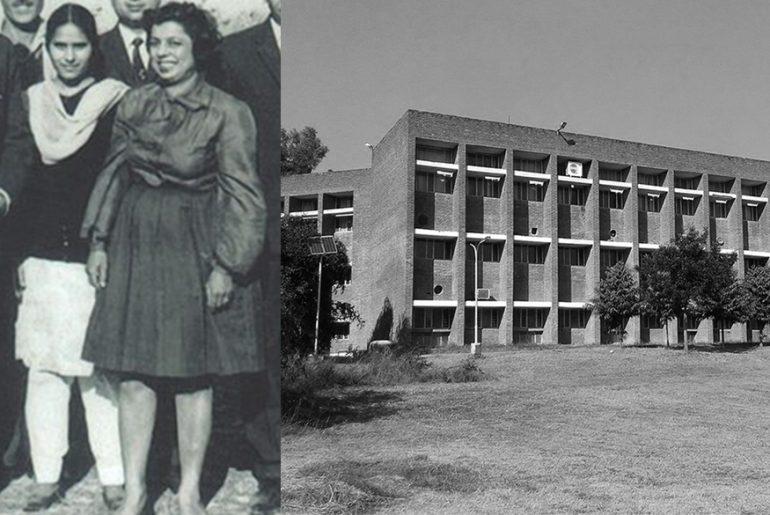Fields like architecture, civil engineering and urban development have long been professions dominated by men. Right from the textbooks we read in school, the pedagogy and discourse on grand monuments of history and conventional geographic wonders, this field has boasted of several architects, the majority of whom are male. These narratives of architectural triumph have traditionally highlighted them in a biased manner, often sidelining some very remarkable contributions of women. This gendered lens of viewing important national contributions greatly affects the way knowledge and achievements are recorded and celebrated.
This article is about 6 such remarkable Indian women architects whose achievements deserve to be recorded in a similar way. It has all you need to know about their architectural style, their career trajectory and education, and the social lens on which their designs are based.
1. Eulie Chowdhury: Architect of India’s First Planned City
Eulie Chowdhury is regarded as one of the earliest women to bring the knowledge and implementation of modernist architecture and urban planning to India. Having studied at prestigious institutions like the University of Sydney, the University of Pennsylvania, and the École des Beaux-Arts in Paris, a globally informed perspective was noted to be prevalent in her work. In the 1950s, Chowdhury greatly contributed to the urban development of Chandigarh (India’s first planned city post-Independence), collaborating closely with well known architects like Le Corbusier and Pierre Jeanneret. Working with then prominent architects, she became a connection between them and other Indian women architects by being a part of their team.
As a member of such a team, her notable assignments were the Home Science College and the Women’s Polytechnic in Chandigarh. Her work emphasised human-centric urban environments, integrating modernist design principles with the socio-cultural needs of a newly independent India. They went beyond aesthetics; as she was particular in creating functional public spaces and educational institutions within the city. She went on to become the Chief State Architect of Haryana, and later Punjab.
2. Pravina Mehta: Modern Architect and Social Activist
Pravina Mehta was a modernist architect and activist for social issues like housing and urban inequality. Having graduated from the Sir J.J. School of Architecture in Mumbai (1940s), she became a key figure in post-independence India’s urban development efforts. She worked alongside architects like Charles Correa in the planning and conceptualisation of Navi Mumbai (then known as the New Bombay proposal), which included building new roads, bridges and industrial zoning. Her architectural designs include the Patel House, Kahim and the Factory Chinchwada, Maharashtra.
Mehta was not just an urban planner but also a passionate advocate for low-cost housing and slum rehabilitation. She was of the belief that architecture should address the needs of society’s most marginalised communities. Her designs emphasised functionality, cost-effectiveness, social equity and affordable housing. Although her structures no longer exist, they were known to imbibe traditional components of architecture into modern designs (like the usage of red sandstone for a stairway), her way of designing an independent and ‘resurgent’ India.
3. Perin Jamsetjee Mistri: India’s First Woman Architect
Perin Jamsetjee Mistri was the first professionally recognised woman architect in India. Having graduated from the Sir J.J. School of Art in Mumbai in 1914, she joined her father’s architectural firm Mistri and Bedhwar. Despite the social barriers of the colonial era, Mistri established herself in the fields of industrial and institutional architecture.
Despite the social barriers of the colonial era, Mistri established herself in the fields of industrial and institutional architecture.
Her major architectural works include Sir Behramji Karanjia’s airy, Art Deco bungalow at Carmichael Road, Khatau mills in Borivali, and St. Stephen’s Church at Cumballa Hill. She was known to have contributed to public housing and industrial work quite prominently. Perin was also vocal about the importance of including women in design spaces and in key decisions of the architectural process.
A woman, as per an anonymous letter in the Times of India, once praised her inclusivity in design by saying, ‘A woman architect would not make the mistake, I am sure, as the architect of the building I live in has done, of thinking that families have stopped having babies.’ She stipulated that her “expensive” house did not have even a small verandah where she could air her kids’ clothes.
4. Gira Sarabhai: Architect & Founder of NID
Gira Sarabhai was a self-trained architect under the American architect Frank Lloyd Wright at Taliesin West Studio, Arizona. She co-founded the National Institute of Design (NID) in Ahmedabad, which remains one of India’s premier design institutions. She was also known to have founded Shilpi, an Indian design-based advertising agency.
Sarabhai also established the Calico Museum of Textiles in Ahmedabad. It is a curatorium of historical fabric, a centre for knowledge, training and research. Her architectural vision emphasised the fusion of modernist ideas with Indian traditions, promoting cultural preservation through design. Through her work in education and curation, she inspired generations of designers and architects, who went on to embed cultural consciousness at the heart of modern design thinking.
5. Sheila Sri Prakash: Architect & Scholar in Sustainable Architecture
Sheila Sri Prakash is one of the earliest champions of sustainable and environmentally friendly architecture in India. A graduate of Anna University in Chennai, she began her architectural practice in 1979, a period when green building concepts were still unheard of in India. Her designs are recognised nationally and internationally, in works such as Mahindra World City( India’s first integrated business city built on sustainable development principles) and Cholamandal Artists’ Village (an artist commune in Chennai).
Her designs are recognised nationally and internationally, in works such as Mahindra World City( India’s first integrated business city built on sustainable development principles) and Cholamandal Artists’ Village (an artist commune in Chennai).
Her architectural style integrates vernacular traditions, passive cooling techniques, and the use of local material to reduce environmental impact. She is also the creator of the Reciprocal Design Index, a framework for evaluating the sustainability and social impact of architectural projects. As a member of the World Economic Forum’s Global Agenda Council on Design Innovation, she has advocated for holistic approaches to urban planning and sustainable development on global platforms.
6. Revathi Kamath: Proponent of Mud Architecture in India
Revathi Kamath is widely regarded as the pioneer of mud architecture in India, championing sustainable and community-centered architectural practices. She obtained her degree in architecture from the School of Planning and Architecture in Delhi, and dedicated her career to creating structures that are environmentally responsible and socially inclusive. She opened a firm named “Kamath Design Studio – Architecture, Planning and Environment”, and was the proponent of the “Evolving Home” concept of redevelopment (for which she consulted 350 families to understand their needs and construct their home on ground).
One of her most influential projects is the Anandgram Project, a rehabilitation housing initiative for displaced artisans. Kamath operates with traditional construction techniques, particularly mud architecture, to create affordable and climate-responsive housing. Her designs emphasise participatory architecture and involving communities in the creation of their own living spaces.
In today’s world, there is no doubt that we navigate the complexities of urbanisation, climate change, and the need for more inclusive cities. The legacies of these women remind us, not only of architecture being a very possible field of proponents for women, but also that the future of architecture must be both sustainable and humane. In that way, apart from merely building foundational architectural structures, these women have also built solid social structures to inspire more women in the future to strive for the same.
About the author(s)
Lakshmi Yazhini is a post graduate student, pursuing an Integrated Masters in Development Studies, at the Indian Institute of Technology Madras. Based in Chennai, Yazhini has an avid research interest in the intersectionality of feminist geography and the state, in peripheral cities. In her free time, she likes to bake, do yoga, read fiction and pen down her thoughts in her journal (which are most often about the micro inequalities around her). Yazhini hopes to explore, write and make a difference about these as a policymaker some day.








